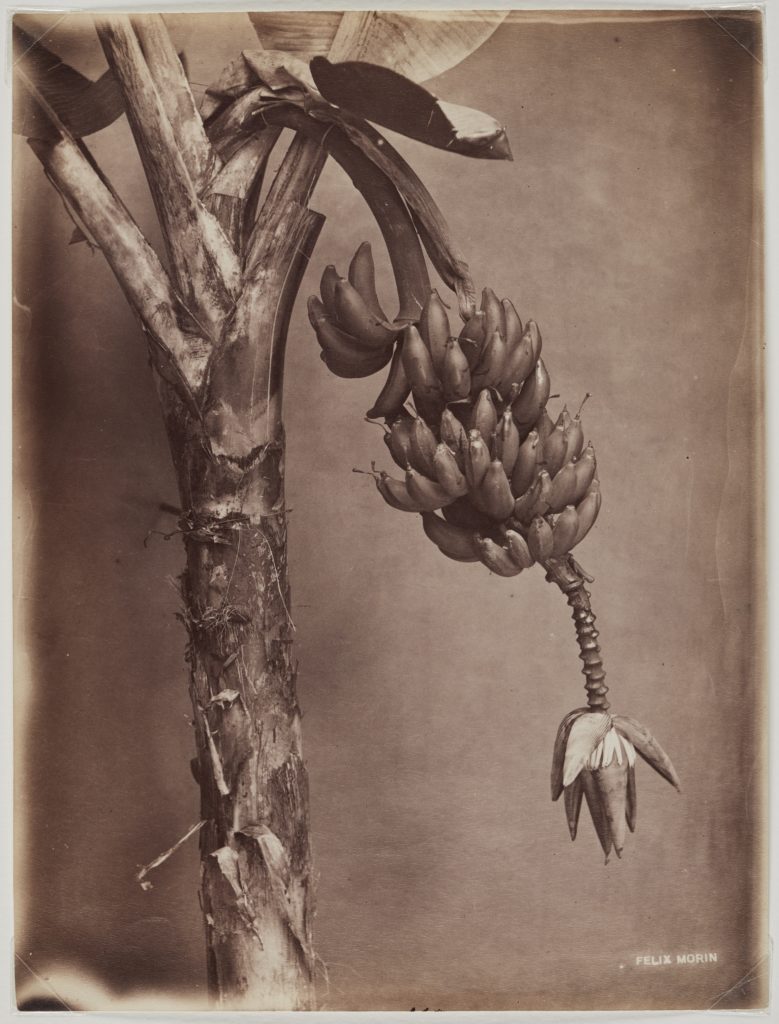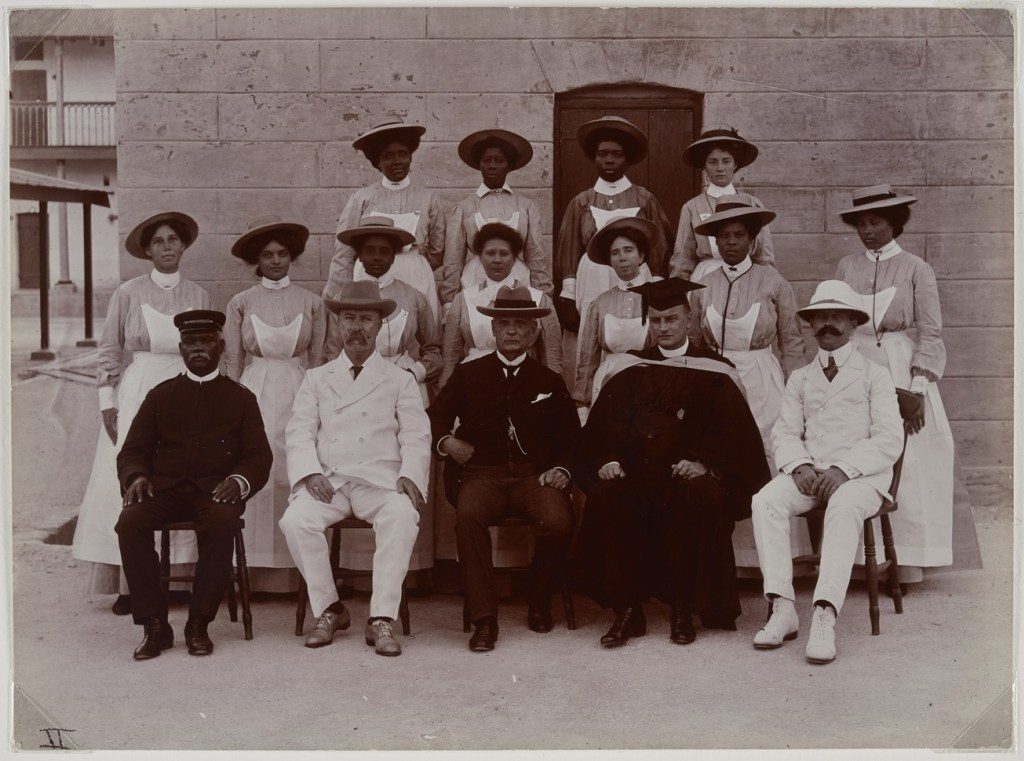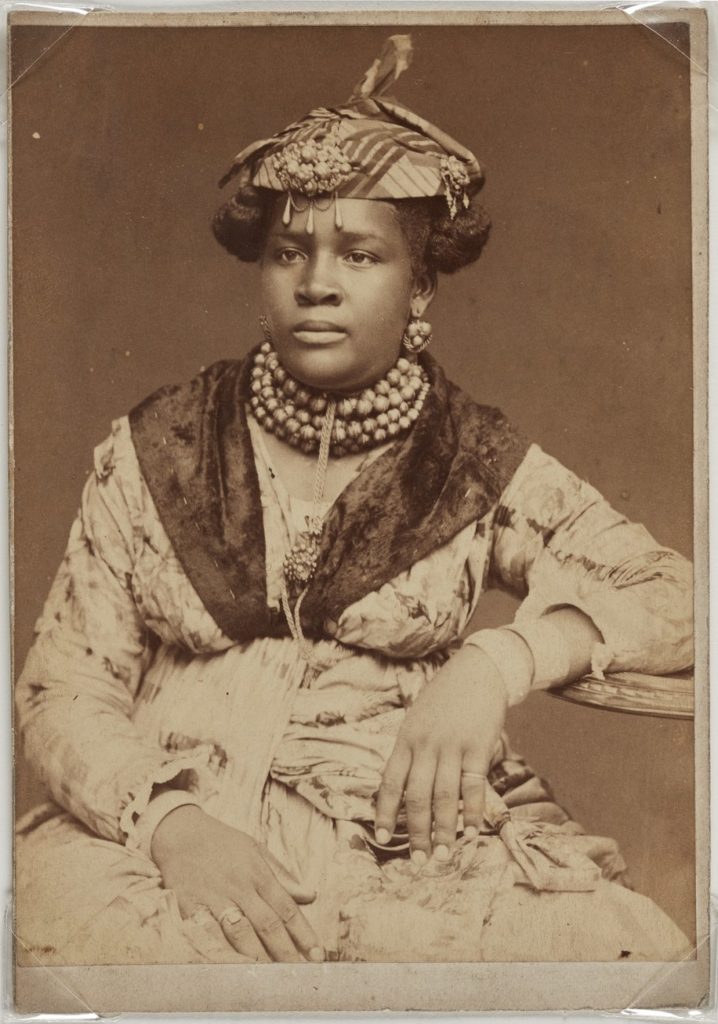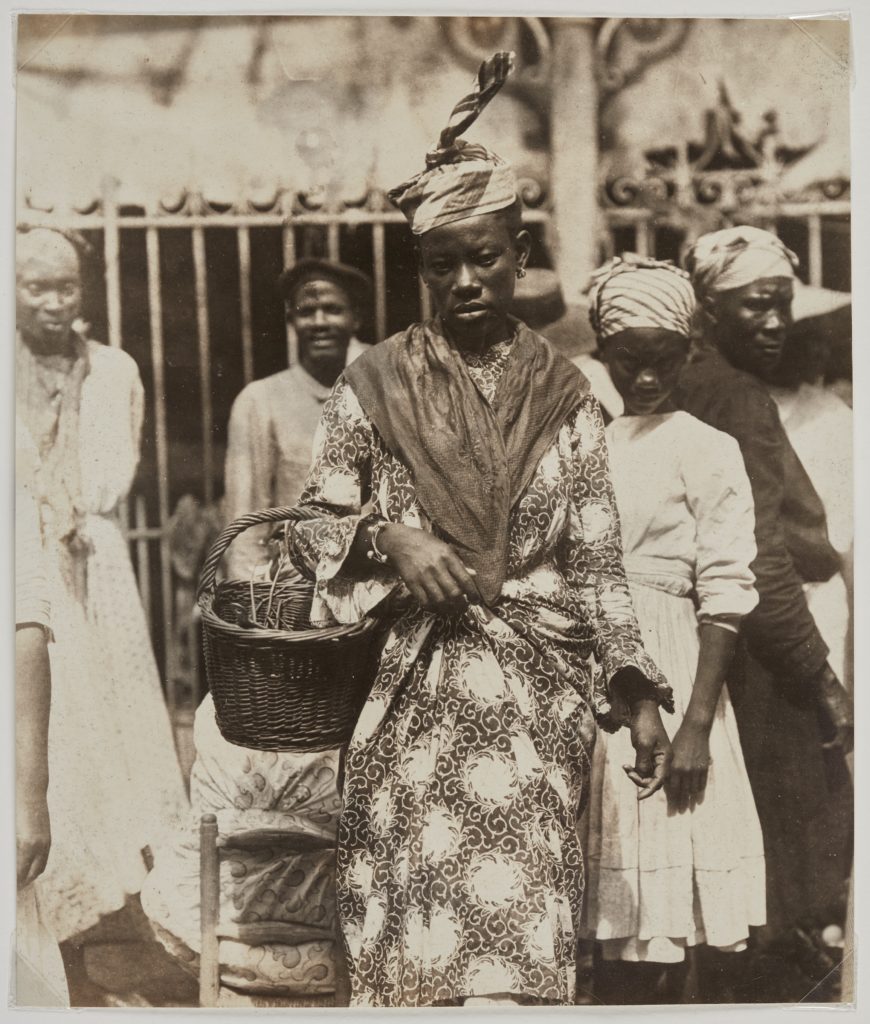It started with a standard visit to an art fair. But it has ended up changing the course of Caribbean presence and representation in Canadian art collections.
It’s the story of how the Art Gallery of Ontario came to acquire the largest known collection of Caribbean historical photographs outside that region.
“We were in New York for AIPAD, the annual photography fair,” says Julie Crooks, assistant curator of photography at the AGO. “A colleague of Sophie Hackett’s, who is curator of photography here, mentioned there was a collector who has this specific body of Caribbean photography, and that it was an opportune time to go and see it.”
That collector was New York’s Patrick Montgomery, a former stock-photo dealer who, in 2004, started accumulating what ended up being a dazzling 3,500-plus photo array of historical images from the Caribbean.
“I like to visit the Caribbean, and when I go, I go to local historical societies,” Montgomery says. “I was surprised how few of them had photo collections…. So I started poking around and talking to dealers, and it turns out they did exist, but not in the Caribbean. The climate and economy [largely] didn’t support that kind of archive.”
Montgomery says over the course of 10 years of searching for historical Caribbean photographs, he found a lot of photos of Jamaica and other British colonies in the UK, and similarly, a lot of photos of Martinique and other French colonies in France—but no historical photo collection spanning the many nations of the Caribbean at once.
The collection accumulated by Montgomery is thus distinctive in its reach, covering no fewer than 34 countries from 1840 through to 1940.
“We were really from the get-go blown away by its breadth of the collection,” recalls Crooks of that first visit in New York. “And what this could mean for expanding our collection—and also mean for the Caribbean communities here in Toronto who would have access to it.”
Soon, other people—like donors in Toronto—were blown away too. Montgomery’s collection was recently acquired by the AGO thanks to $300,000 in support mainly from Toronto’s Caribbean and Black community donors, led by Drs. Liza and Frederick Murrell.
The collection is making waves further afield as well. “I was talking with someone in Pittsburgh,” says Crooks, “and he was so excited…. ‘It’s like this doesn’t exist in photography history,’ he was saying, ‘this very moment.’”
There really has not been much done in terms of exhibitions or collections on Caribbean photo history outside of the Caribbean itself. Most presentations that have been done have been highly focused on individual countries—like Autograph UK’s 2017 show “Making Jamaica: Photography from the 1890s”—or on the African diaspora in general.
“I mean, I think African photography, definitely since 2005, has had a lot of attention,” says Crooks. “And you can find Caribbean photography from the 1970s onwards, and definitely contemporary works. But this kind of historical material has largely been erased. It’s hard to pinpoint another show or institution that has presented this level of material on the region.”
Though photographs from this new collection are currently in cataloguing and won’t go on display to the public at the AGO until 2021, says Crooks, there will be some small programs and talks until then designed to start up public access.
Here, Crooks and Montgomery provide a peek and insights into some of the first works to be shared with media from the Montgomery Collection of Caribbean Photographs.
 Unknown photographer, Jamaican Women, c. 1900. Gelatin silver print, 16.5 x 21.6 cm. Montogomery Collection of Caribbean Photographs. Donor funds to acquire the Montgomery Collection of Caribbean Photographs include the support of Dr. Liza and Dr. Frederick Murrell, Bruce Croxon and Debra Thier, Wes Hall and Kingsdale Advisors, Cindy and Shon Barnett, Donette Chin-Loy Chang, Kamala-Jean Gopie, Phil Lind and Ellen Roland, Martin Doc McKinney, Francilla Charles, Ray and Georgina Williams, Thaine and Bianca Carter, Charmaine Crooks, Nathaniel Crooks, Andrew Garrett and Dr. Belinda Longe, Neil L. Le Grand, Michael Lewis, Dr. Kenneth Montague and Sarah Aranha, Lenny and Julia Mortimore, and The Ferrotype Collective, 2019.
Unknown photographer, Jamaican Women, c. 1900. Gelatin silver print, 16.5 x 21.6 cm. Montogomery Collection of Caribbean Photographs. Donor funds to acquire the Montgomery Collection of Caribbean Photographs include the support of Dr. Liza and Dr. Frederick Murrell, Bruce Croxon and Debra Thier, Wes Hall and Kingsdale Advisors, Cindy and Shon Barnett, Donette Chin-Loy Chang, Kamala-Jean Gopie, Phil Lind and Ellen Roland, Martin Doc McKinney, Francilla Charles, Ray and Georgina Williams, Thaine and Bianca Carter, Charmaine Crooks, Nathaniel Crooks, Andrew Garrett and Dr. Belinda Longe, Neil L. Le Grand, Michael Lewis, Dr. Kenneth Montague and Sarah Aranha, Lenny and Julia Mortimore, and The Ferrotype Collective, 2019.
This is one of my favourites, actually: a group of women in Jamaica in a rural setting. You see the range of women represented, and then a range in the clothing—from very prim and proper Victorian or early Victorian to more local, using a mix of fabrics, some maybe imported from India. So there are these hybrid or creolized identities.—Julie Crooks
 Felix Morin, Bananas, Trinidad, c. 1890. Albumen print, 25.4 x 19.7 cm. Montogomery Collection of Caribbean Photographs. Donor funds to acquire the Montgomery Collection of Caribbean Photographs include the support of Dr. Liza and Dr. Frederick Murrell, Bruce Croxon and Debra Thier, Wes Hall and Kingsdale Advisors, Cindy and Shon Barnett, Donette Chin-Loy Chang, Kamala-Jean Gopie, Phil Lind and Ellen Roland, Martin Doc McKinney, Francilla Charles, Ray and Georgina Williams, Thaine and Bianca Carter, Charmaine Crooks, Nathaniel Crooks, Andrew Garrett and Dr. Belinda Longe, Neil L. Le Grand, Michael Lewis, Dr. Kenneth Montague and Sarah Aranha, Lenny and Julia Mortimore, and The Ferrotype Collective, 2019.
Felix Morin, Bananas, Trinidad, c. 1890. Albumen print, 25.4 x 19.7 cm. Montogomery Collection of Caribbean Photographs. Donor funds to acquire the Montgomery Collection of Caribbean Photographs include the support of Dr. Liza and Dr. Frederick Murrell, Bruce Croxon and Debra Thier, Wes Hall and Kingsdale Advisors, Cindy and Shon Barnett, Donette Chin-Loy Chang, Kamala-Jean Gopie, Phil Lind and Ellen Roland, Martin Doc McKinney, Francilla Charles, Ray and Georgina Williams, Thaine and Bianca Carter, Charmaine Crooks, Nathaniel Crooks, Andrew Garrett and Dr. Belinda Longe, Neil L. Le Grand, Michael Lewis, Dr. Kenneth Montague and Sarah Aranha, Lenny and Julia Mortimore, and The Ferrotype Collective, 2019.
This is a sudio photograph of a bunch of bananas—it’s quite poetic, actually. It almost looks like a studio “portrait” of a banana bunch.
Felix Morin [noted in lower right corner] was a photographer in France who settled in Trinidad and he took a lot of studio photographs—but also of landscapes and local people.
In the new collection, there are also photographs of women brought into studio with bunches of bananas on their heads—perhaps for a commercial enterprise. Maybe such photos were taken for the fruit industry as a way of advertising the kinds of resources that were being extracted, for American or British companies.—Julie Crooks
 Felix Morin, Coolie Woman, Trinidad, c. 1890. Albumen print, 21.3 x 14.9 cm. Montogomery Collection of Caribbean Photographs. Donor funds to acquire the Montgomery Collection of Caribbean Photographs include the support of Dr. Liza and Dr. Frederick Murrell, Bruce Croxon and Debra Thier, Wes Hall and Kingsdale Advisors, Cindy and Shon Barnett, Donette Chin-Loy Chang, Kamala-Jean Gopie, Phil Lind and Ellen Roland, Martin Doc McKinney, Francilla Charles, Ray and Georgina Williams, Thaine and Bianca Carter, Charmaine Crooks, Nathaniel Crooks, Andrew Garrett and Dr. Belinda Longe, Neil L. Le Grand, Michael Lewis, Dr. Kenneth Montague and Sarah Aranha, Lenny and Julia Mortimore, and The Ferrotype Collective, 2019.
Felix Morin, Coolie Woman, Trinidad, c. 1890. Albumen print, 21.3 x 14.9 cm. Montogomery Collection of Caribbean Photographs. Donor funds to acquire the Montgomery Collection of Caribbean Photographs include the support of Dr. Liza and Dr. Frederick Murrell, Bruce Croxon and Debra Thier, Wes Hall and Kingsdale Advisors, Cindy and Shon Barnett, Donette Chin-Loy Chang, Kamala-Jean Gopie, Phil Lind and Ellen Roland, Martin Doc McKinney, Francilla Charles, Ray and Georgina Williams, Thaine and Bianca Carter, Charmaine Crooks, Nathaniel Crooks, Andrew Garrett and Dr. Belinda Longe, Neil L. Le Grand, Michael Lewis, Dr. Kenneth Montague and Sarah Aranha, Lenny and Julia Mortimore, and The Ferrotype Collective, 2019.
When Patrick first showed me a couple of these portraits, I thought “Oh my god, they are beautiful. She is wearing her best sari, and is bejeweled.” But I’ve since read up on [France-raised, Trinidad-based] photographer Felix Morin and these photographs. You really do have to look at the entirety of the collection with a very critical eye to the kind of colonial gaze. Because these are—well, not quite titillating—but they are meant to create a certain type of Hindu woman because they were produced as postcards that were then circulated in the West. There’s this exotic gaze. At first glance they look very innocuous, but you have to think about what his intent was.
Felix Morin took many photos of the Indo Caribbean community who started to be transported to or migrated to places like Trinidad and Tobago and Jamaica to fill in for former slaves who were no longer working in that way [after emancipation]. He took a lot of photographs of Indo Caribbean women.—Julie Crooks
 Unknown photographer, Glendairy Prison Officials, Barbados, 1909. Albumen print, 14 x 19.7 cm. Montogomery Collection of Caribbean Photographs. Donor funds to acquire the Montgomery Collection of Caribbean Photographs include the support of Dr. Liza and Dr. Frederick Murrell, Bruce Croxon and Debra Thier, Wes Hall and Kingsdale Advisors, Cindy and Shon Barnett, Donette Chin-Loy Chang, Kamala-Jean Gopie, Phil Lind and Ellen Roland, Martin Doc McKinney, Francilla Charles, Ray and Georgina Williams, Thaine and Bianca Carter, Charmaine Crooks, Nathaniel Crooks, Andrew Garrett and Dr. Belinda Longe, Neil L. Le Grand, Michael Lewis, Dr. Kenneth Montague and Sarah Aranha, Lenny and Julia Mortimore, and The Ferrotype Collective, 2019.
Unknown photographer, Glendairy Prison Officials, Barbados, 1909. Albumen print, 14 x 19.7 cm. Montogomery Collection of Caribbean Photographs. Donor funds to acquire the Montgomery Collection of Caribbean Photographs include the support of Dr. Liza and Dr. Frederick Murrell, Bruce Croxon and Debra Thier, Wes Hall and Kingsdale Advisors, Cindy and Shon Barnett, Donette Chin-Loy Chang, Kamala-Jean Gopie, Phil Lind and Ellen Roland, Martin Doc McKinney, Francilla Charles, Ray and Georgina Williams, Thaine and Bianca Carter, Charmaine Crooks, Nathaniel Crooks, Andrew Garrett and Dr. Belinda Longe, Neil L. Le Grand, Michael Lewis, Dr. Kenneth Montague and Sarah Aranha, Lenny and Julia Mortimore, and The Ferrotype Collective, 2019.
This is in Barbados: the photo is called Glendairy Prison Officials. So you can see the stamp of colonialism here. The structure and administration of the colonial project is in this photograph.
As we have been cataloguing, we’ve found titles like Government House, Trinidad, Government House, Barbados, Government House, Nevis. So the cataloguing of colonial presence is universal across the regions. I find that really interesting.—Julie Crooks
 Unknown photographer, Martinique Woman, c. 1890. Albumen print, 15.2 x 20.3 cm. Montogomery Collection of Caribbean Photographs. Donor funds to acquire the Montgomery Collection of Caribbean Photographs include the support of Dr. Liza and Dr. Frederick Murrell, Bruce Croxon and Debra Thier, Wes Hall and Kingsdale Advisors, Cindy and Shon Barnett, Donette Chin-Loy Chang, Kamala-Jean Gopie, Phil Lind and Ellen Roland, Martin Doc McKinney, Francilla Charles, Ray and Georgina Williams, Thaine and Bianca Carter, Charmaine Crooks, Nathaniel Crooks, Andrew Garrett and Dr. Belinda Longe, Neil L. Le Grand, Michael Lewis, Dr. Kenneth Montague and Sarah Aranha, Lenny and Julia Mortimore, and The Ferrotype Collective, 2019.
Unknown photographer, Martinique Woman, c. 1890. Albumen print, 15.2 x 20.3 cm. Montogomery Collection of Caribbean Photographs. Donor funds to acquire the Montgomery Collection of Caribbean Photographs include the support of Dr. Liza and Dr. Frederick Murrell, Bruce Croxon and Debra Thier, Wes Hall and Kingsdale Advisors, Cindy and Shon Barnett, Donette Chin-Loy Chang, Kamala-Jean Gopie, Phil Lind and Ellen Roland, Martin Doc McKinney, Francilla Charles, Ray and Georgina Williams, Thaine and Bianca Carter, Charmaine Crooks, Nathaniel Crooks, Andrew Garrett and Dr. Belinda Longe, Neil L. Le Grand, Michael Lewis, Dr. Kenneth Montague and Sarah Aranha, Lenny and Julia Mortimore, and The Ferrotype Collective, 2019.
This is a woman in Martinique. It’s a studio photograph and she is dressed up in her local attire or costume. I thought that was interesting to see happening at this time—post-emancipation: 1840s, 1860s, a time of individuals going into the studio to have their photo taken.—Julie Crooks
 J.W. Cleary, Coconut Palms, Kingston Harbour, c. 1895. Gelatin silver print, 17.5 x 23.1 cm. Gift of Patrick Montgomery, 2019.
J.W. Cleary, Coconut Palms, Kingston Harbour, c. 1895. Gelatin silver print, 17.5 x 23.1 cm. Gift of Patrick Montgomery, 2019.
This is a beautiful landscape from Kingston, Jamaica. It’s a tropical scene, which we will find again in a lot of the work.—Julie Crooks
The most photographed areas were Jamaica, Barbados and Trinidad. So as the collecting went on, I was looking for things from smaller, less-photographed islands, like St. Bart’s. After a while you get a sixth sense about where photos are from—you recognize places, or photographers’ names, or buildings. But sometimes I would buy a lot of photographs [ostensibly] representing the Caribbean and there would be Venezuela and Panama and other countries in there that look similar.—Patrick Montgomery
 Unknown photographer, At The Market, Martinique, c. 1895. Albumen print, 22.2 x 18.4 cm. Montogomery Collection of Caribbean Photographs. Donor funds to acquire the Montgomery Collection of Caribbean Photographs include the support of Dr. Liza and Dr. Frederick Murrell, Bruce Croxon and Debra Thier, Wes Hall and Kingsdale Advisors, Cindy and Shon Barnett, Donette Chin-Loy Chang, Kamala-Jean Gopie, Phil Lind and Ellen Roland, Martin Doc McKinney, Francilla Charles, Ray and Georgina Williams, Thaine and Bianca Carter, Charmaine Crooks, Nathaniel Crooks, Andrew Garrett and Dr. Belinda Longe, Neil L. Le Grand, Michael Lewis, Dr. Kenneth Montague and Sarah Aranha, Lenny and Julia Mortimore, and The Ferrotype Collective, 2019.
Unknown photographer, At The Market, Martinique, c. 1895. Albumen print, 22.2 x 18.4 cm. Montogomery Collection of Caribbean Photographs. Donor funds to acquire the Montgomery Collection of Caribbean Photographs include the support of Dr. Liza and Dr. Frederick Murrell, Bruce Croxon and Debra Thier, Wes Hall and Kingsdale Advisors, Cindy and Shon Barnett, Donette Chin-Loy Chang, Kamala-Jean Gopie, Phil Lind and Ellen Roland, Martin Doc McKinney, Francilla Charles, Ray and Georgina Williams, Thaine and Bianca Carter, Charmaine Crooks, Nathaniel Crooks, Andrew Garrett and Dr. Belinda Longe, Neil L. Le Grand, Michael Lewis, Dr. Kenneth Montague and Sarah Aranha, Lenny and Julia Mortimore, and The Ferrotype Collective, 2019.
This is a market woman. What has impressed me about the range of photography in the collection is that it really does show the presence of photography very early after its invention in the region, and it shows how these histories are often erased. Now we are engaged in the very slow, painstaking process of inventory for each object.
One thing I really want people to know about is the donors. Because without them we wouldn’t have the collection. They came on board right away when we presented the work. They saw this as a way of bringing this history into a Canadian institution. In the same way as it’s a Canadian story, it’s also a Caribbean story, and vice versa, because of Canada’s immigration history. And now this is a legacy project to build on.—Julie Crooks





